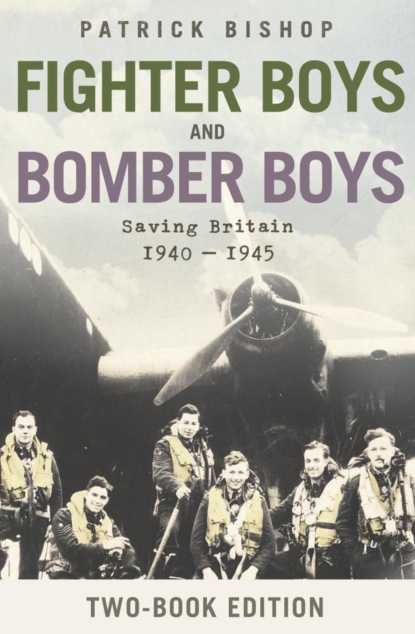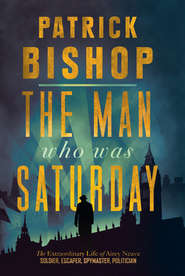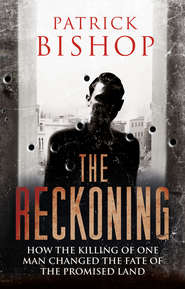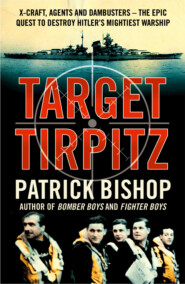По всем вопросам обращайтесь на: info@litportal.ru
(©) 2003-2024.
✖
Fighter Boys and Bomber Boys: Saving Britain 1940-1945
Настройки чтения
Размер шрифта
Высота строк
Поля
(#litres_trial_promo) It was the same for Adolph ‘Sailor’ Malan, a South African ex-merchant navy officer who settled in Britain in 1935 and applied for a short-service commission. Malan’s voyages with the Union Castle line had taken him to Hamburg, where he ‘spent a lot of time talking to German harbour officials, sailors and civilians. Their attitude made me realize that war was inevitable.’
(#litres_trial_promo)
The pilots were joined by men who had no strong bonds natural with Britain, such as Billy Fiske, an upper-class American sportsman, captain of the US Olympic bobsled team, who volunteered two weeks after the outbreak of war. Several recruits came from Ireland. The fact that Eire was officially neutral and just emerging from a bitter independence struggle with Britain had made no difference to ‘Paddy’ Finucane, whose father had taken part in the 1916 Easter Rising, nor to John Ignatius ‘Killy’ Kilmartin, black-haired and sleekly handsome, who was to fight almost from the first day of the war to the last.
Acceptance, resignation, a certain thrilled apprehension seem to have been the predominant attitudes and emotions as the last days of peace slipped away. Not everyone answered the call of duty. In 609 Squadron one pilot decided to defect. He was, Stephen Beaumont recalled, ‘not a particularly attractive man…We felt no loss at his going.’ The squadron structure and the overwhelming importance of esprit meant that only the dedicated were welcome.
At Hornchurch, aircraft were now dispersed away from their hangars and along the far side of the airfield and tents put up to house the ground crews. A readiness system was introduced so that one shift of pilots was always dressed and ready to fly at short notice. It was to last until 1943 when the Luftwaffe no longer posed any serious threat to the country in daylight. Al Deere and the other pilots spent summer days stripped to the waist, filling sandbags to build the walls of U-shaped blast-protection pens that shielded their Spitfires. At Tangmere 1 Squadron and 43 Squadron skimmed their Hurricanes over the Channel waves, firing at splash targets with volleys from their Brownings that kicked up jagged white plumes and churned the water. The effect seemed devastating to old-timers brought up on the spindly fire-power of a single Lewis gun. ‘The noise is not so much a rat-a-tat as a continuous jarring explosion,’ wrote an RFC veteran.
(#litres_trial_promo) By night they climbed into the Sussex skies, suspended between the stars and the street lighting that provided bearings and allowed them to keep station in the pre-blackout era. On landing, the ground crews would pounce to rearm and refuel in minutes, practising the rapid turnarounds that would prove crucially important in the fighting to come.
It was not all work. Squadron Leader Lord Willoughby de Broke arrived with the other members of 605 Auxiliary Squadron at Tangmere and entertained at Tangmere Cottage, opposite the base. The pilots, Peter Townsend remembered, ‘spent wild evenings, drinking, singing, dancing to romantic tunes’, with ‘These Foolish Things’, the hit of the day, revolving eternally on the gramophone.
All around, though, the peacetime landscape was changing. The whitish aprons and parade grounds of Biggin Hill were covered in chippings in a vain attempt to disguise the station from the air. On several nights, the lights of London were extinguished in a trial to test the efficiency of the blackout. A pilot reported that the ground ‘looked like space inverted, just space with a few pinpricks of light like stars’. Barrage balloons wallowed in the air over town and suburb. The skies themselves were filled with ominous noises. In August, 200 bombers, fighters and reconnaissance aircraft appeared over London, Liverpool, Bristol, Birmingham, Manchester and Oxford, where they attracted the attention of RAF fighters and searchlight units. The aircraft were French, and the exercise intended as a test of Britain’s air defences, but few could have looked up without a frisson of apprehension.
Death moved a little closer. The Oxford University Air Squadron and RAFVR summer camp at Lympne in July was overshadowed by a midair collision in which Pilot Officer David Lewis, an experienced pilot who was flying solo in a Hawker Hind, crashed into a Gipsy Moth carrying a pupil and instructor from the Kent Flying School. All three were killed. It was, the OUAS log recorded ‘the first fatal accident in the squadron since it formed’.
Accidental deaths were commonplace, however, elsewhere in the air force, as pilots stalled, spun in, or flew into ‘clouds with a hard centre’ – hills obscured by fog. On one murky night at Biggin Hill, Flying Officer Olding was sent up to report on the state of a practice blackout in the Greater London area. Soon after take-off his engine seemed to cut out, then the pilots in the mess heard an explosion. A fire tender was ordered out, but fearing it would never be able to locate the wreckage in the foul weather, Flying Officer Woolaston took off, intending to drop a magnesium flare near the crash site. A few minutes later a second explosion was heard. His Hurricane was found a hundred yards from Olding’s, having flown into the top of Tatsfield Hill.
The effect of such events could be profound, but not necessarily lasting. Brian Kingcome was ordered to go and formally identify the body of a squadron pilot who crashed near Andover. He flew down and was met by a policeman who was concerned at the effect the sight of a mangled body might have on a healthy young man. ‘The body had been quite badly battered, he warned me, and I braced myself for the worst. Gently he drew back the sheet…I looked at the broken body and felt curiously unmoved…On my way back to Hornchurch I briefly wondered whether there was not a lesson here: whether I ought to be more careful, stick more closely to the rule books…’ The mood, though, ‘was short-lived’.
(#litres_trial_promo)
The number of fatal accidents inevitably increased as the 300 m.p.h. plus monoplanes, far harder to control than the biplanes, and in need of more room to recover if a mistake was made, were fed into the squadrons. At Tangmere, one pilot slid too slowly out of a turn and crashed in front of his comrades. Another time they watched as a pilot clipped the top of a tree coming in to land and burned to death before their eyes. Afterwards, Peter Townsend recorded ‘we had our own methods of restoring our morale. In the early hours of that morning, in the mess, we mourned our lost comrade in our own peculiar way, which smacked somewhat of the ritual of primitive tribesmen. Fred Rosier took his violin and to the tune of the can-can from Orpheus in the Underworld, we danced hilariously round the mess.’
(#litres_trial_promo)
Other atavistic instincts were stirring; the impulses to marry, or at least to have sex. The pre-war RAF discouraged officers from matrimony under the age of thirty. This was partly out of parsimony, partly out of considerations of efficiency and the desire to foster a mess-centred squadron spirit. What the service needed were single men free of family responsibilities, ready to move, at virtually no notice, where and when they were needed. Pilots had to seek the permission of their commanding officers before taking a wife. Failure to secure it meant no married quarters accommodation and no allowances. As the year wore on, the number of requests multiplied. On getting engaged to his girlfriend, Annette, Pete Brothers had to appear before Group Captain Dick Grice, the Biggin Hill commandant, who, ‘fortunately…was a very charming chap. He was sitting behind a desk smoking a pipe, and he said, “You’re very young” – I was just 21 – “what if I refuse?” I said in that case it would be very difficult to send him an invitation to the wedding.’
(#litres_trial_promo) Grice, an immensely popular father figure with Biggin Hill pilots and staff, laughed and gave in.
Tim Vigors, on leave from Cranwell, took advantage of a trip to London to look up Kitty, a girlfriend who was staying in town with an aunt. They spent the evening dancing in a club off Regent Street, leaving at 3 a.m. Vigors daringly suggested that she come back for a drink. To his surprise she agreed and they repaired to the Regent Palace Hotel. He was prevented from taking matters further when a vigilant night porter blocked his path, protesting that Vigors had ‘only booked a single and anyway she’s far too young for those kind of tricks’. He ‘tried to remain calm despite the fact that I had never felt so embarrassed in my life. “None of your business!” I retorted. “Come on Kitty, let’s get inside and lock this bastard out!”’ Kitty, however, burst into tears. Vigors gallantly drove her home and returned to the hotel ‘feeling embarrassed, ashamed, angry and frustrated’.
(#litres_trial_promo)
Senior officers, too, felt youthful stirrings as the great trial approached. Air Vice-Marshal Trafford Leigh-Mallory, the Air Officer Commanding No. 12 Fighter Group covering the Midlands and north, visited his pilots in 616 Squadron at their summer camp at Manston on the Kent coast. A dinner was laid on in his honour in one of the marquees. At the end of the evening the inevitable, well-lubricated games began. One involved climbing up the centre pole, squeezing through a ventilation flap, clambering over the ridge pole and re-entering the tent through the flap on the other side. Several pilots, including Hugh Dundas, did so without mishap.
Then someone suggested that the AOC should have a go. Very sportingly, he agreed. But he was not really built for that kind of thing. In the course of the passing years his figure had thickened. He got up the pole all right. But he had a terrible job squeezing out through the ventilation flap. We stood below and cheered him on. At last he plopped through and his face, purple with exertion, disappeared out into the night. The tent swayed and the ridge-pole sagged as he struggled across the top. His legs reappeared on the other side. He got half-way and stuck.
Shouting with laughter, we urged him on and his legs and buttocks wiggled and waggled as he fought his way through that canvas flap. Someone shinned up the pole and helped him with a few hearty tugs. He came out like a champagne cork, grabbed desperately at the pole and descended from a height of about ten feet in a free fall…He accepted a very large, very dark whisky and soda and left us hurriedly before we started playing something else.
(#litres_trial_promo)
A few days later Dundas was sitting in the mess tent after a morning’s flying when the news of the Molotov-Ribbentrop pact came through. ‘Teddy St Aubyn, who was sitting opposite me, put down his soup spoon and said in a loud, clear voice: “Well that’s …d it. That’s the start of the …g war.”’ Looking back, Dundas could not say why this pronouncement struck him with such force, given that, as he dryly remarked, ‘Teddy…was not noted as a political pundit or a serious student of international affairs. But I heard his words and knew they were true.’
The announcement was finally made late on the morning of 3 September, a day that was generally remembered as being exceptionally warm, sunny and redolent of all the promise of young life. At fighter bases the length and breadth of the country the pilots gathered in the mess or clustered round portable radios rigged up at the dispersal areas to hear Prime Minister Chamberlain speak. At Tangmere, the pilots in Peter Townsend’s flight were lying on the grass by their Hurricanes when they were told that ‘the balloon goes up at 11.45’. They walked over to the mess, covered in pink creeper, and waited while the faithful stewards served drinks in pewter mugs. As the broadcast ended, ‘the tension suddenly broke. The fatal step had been taken; we were at war.’ Caesar Hull, a brilliant sportsman and aerobatic pilot who had joined the RAF on a short-service commission from South Africa, was the first to rejoice, repeating, ‘Wizard!’ over and over. He turned to another 43 pilot John Simpson, and laughingly prophesied: ‘Don’t worry, John, you’ll be one of the first to be killed.’ Simpson survived the war. Hull died a year and four months later while attacking a large formation of German bombers. That night, after being released, Townsend and his comrades raced to the Old Ship at Bosham. ‘What a party we had; at closing time, we went out into the street and fired our revolvers into the air. Windows were flung open, people rushed from their houses, thinking the invasion had started.’
(#litres_trial_promo)
At Cranwell, Tim Vigors and his fellow cadets were ordered to the ante-room to hear the broadcast. When the declaration of war came, ‘a shout of excitement rose from all our throats. As one man we jumped to our feet cheering. There was not one amongst us who would not have been bitterly disappointed had the declaration of war not been made.’ The same scene was taking place simultaneously in a classroom in Hull, where Charlton Haw and thirty of his fellow RAFVR pilots were gathered after being called up the week before. ‘A tremendous cheer went out from all of us. We were very pleased about the whole thing. We didn’t think about the danger. We all had visions of sitting in a Spitfire the following day. And then the disappointing thing was we were all sent home.’
(#litres_trial_promo) In Romford, where he worked in the Ind Coope brewery, another reservist, William Walker, switched off the radio, put on his sergeant’s uniform and walked out of his block of flats. A group of men were digging an air-raid shelter and he offered to help. ‘They said: “No, not at all! You’re in uniform. We can’t let you do that sort of thing.”’
(#litres_trial_promo)
Charles Fenwick, who had recently joined the RAFVR, was one of the few to be surprised by the news. He was so buoyed up by happiness that he had refused to believe war could not be avoided. ‘I was in love as only a twenty-year-old can be in love, I was all set for Cambridge, I owned a lovely little car and damn it I was enjoying life. Then this shit-head comes along and puts the lid on everything.’ His first reaction was ‘one of absolute shock, horrified shock…My second reaction was not long in coming. No bloody German was going to hurt those I loved and get away with it if I could stop him.’
(#litres_trial_promo)
The pilots of 56 Squadron were sitting in small groups in the sun on the east side of the aerodrome at North Weald in Essex, listening to radios powered by outsize batteries. Earlier the squadron adjutant had distributed blue will forms to be filled in. ‘There were great roars of laughter,’ remembered Peter Down, a twenty-three-year-old who had joined eighteen months before. ‘All we had to leave really were our golf clubs and tennis rackets and things. We had the odd car and there were shouts of, “Who wants my Lagonda?” or, “Who wants my clubs?” We left them to each other.’
(#litres_trial_promo)
Not everyone was so light-hearted. Brian Kingcome was struck by the flatness of the address, devoid of drama or tension, ‘just this, sorrowful defeated voice going on’. He looked around at his companions in the hangar office in Hornchurch, ‘thinking to myself, probably the whole lot of us will be dead in three weeks…No sooner had Chamberlain finished his speech on the radio than we expected to hear the murmur of hordes of German bombers approaching and that became the norm at dispersal for a while.’
(#litres_trial_promo)
5 Winter of Uncertainty (#ulink_e0376c63-dadc-56bd-a6de-7b9153eaf130)
The war began in a flurry of false alarms. Air-raid sirens sounded almost immediately after Chamberlain’s Sunday broadcast, sending civilians hurrying to the shelters. But no Germans came. The defenders were eager for action and trigger-happy. Three days after the declaration of war, a searchlight battery on Mersea Island in the Blackwater estuary spotted what was thought to be a hostile aircraft crossing the Channel coast. This exciting news was passed on to the Northolt headquarters of 11 Group, which covered the south-east of England. They, in turn, ordered the local sector controllers at North Weald to send up fighters to investigate. Hurricanes from 56 Squadron took off from North Weald aerodrome and climbed through the mist into the clear morning sky to hunt for the intruders. As they did so, their traces were picked up by the radar station at Canewdon, on the muddy tongue of Essex that sticks out between the Crouch and Thames estuaries. Even now, the cause of the tragic fiasco that followed is not entirely clear. Air Chief Marshal Sir Hugh Dowding, the Fighter Command chief, said later that the equipment was faulty and the baffle designed to block out electronic echoes from the landward side was not functioning, though this was disputed. To the operators it seemed they had located a big enemy formation coming in over the sea. More fighters were scrambled to deal with the apparent threat, and they in turn registered on the screen and added to the thickening confusion. Among them were twelve Spitfires from 74 Squadron at Hornchurch. ‘A’ Flight, commanded by Adolph Malan, took off first. He led one section of three aircraft. Flying Officer ‘Paddy’ Byrne, an experienced, Irish-born pilot with a reputation for eccentricity, led another. In the adrenaline-charged atmosphere, chaos, then catastrophe, ensued.
Pilot Officer John Freeborn, barely out of Leeds Grammar School but well-freighted with Yorkshire obstinacy, was directly behind Byrne. ‘It was a very misty morning but it was a beautiful day,’ he said. ‘I remember looking down and seeing we had cut a line through the haze where we had taken off. Malan was well in front…We saw these aircraft and Malan gave the order: “Number One attack – go!” They made an attack at these aircraft and then pulled away. And so we went and attacked.’
(#litres_trial_promo)
The combat was only too successful. Freeborn, Byrne and the third man in the section, Sergeant Pilot John Flinders, swooped down in line astern. Freeborn and Byrne opened fire and saw two aircraft go down trailing smoke. Freeborn felt ‘exhilarated’ at their success. On the way back to Hornchurch he saw what he thought was a Luftwaffe bomber and was about to attack when Flinders yelled a warning on the R/T that it was in fact a friendly Blenheim. On landing he was met by his commanding officer, Squadron Leader George Sampson, and told that the aircraft he and Byrne had disposed of were Hurricanes from 56 Squadron. Pilot Officer Montague Hulton-Harrop was dead. He was nineteen years old, a newcomer to the squadron and ‘tall, fair-haired and eager’, according to Eric Clayton, a ground-crew member who maintained his machine. Pilot Officer Tommy Rose survived and showed up later in the day.
(#litres_trial_promo)
Freeborn was appalled. He tried to find Malan, but he had ‘done a bunk completely. Never saw him.’ He and Byrne were put under arrest. ‘I was sent to my room with a bloke from 54 Squadron to guard me…I was eighteen years old, frightened to bloody death.’
(#litres_trial_promo) Coming soon after an incident when he had been severely reprimanded for landing with the undercarriage of his Spitfire up, Freeborn assumed his RAF career was over. The affair was particularly agonizing because, as squadron adjutant, he had previously distributed orders to the pilots telling them under no circumstances to shoot at single-engined planes. The instruction was based on the calculation that no Luftwaffe fighter had the range to reach Britain and that any single-engined machine was bound to be friendly. The speed with which Freeborn forgot the order was proof of the disorienting power of the heat of the moment. Al Deere, who was also scrambled that morning, had felt it too. ‘We were all keyed up,’ he said. ‘You didn’t think about the fact that a 109 could never have got as far as England from the then borders of Germany.’
(#litres_trial_promo)
A general court martial was set for 7 October. Sampson, ‘an absolute toff’ according to Freeborn, put the pair in touch with Sir Patrick Hastings, an intelligence officer at Fighter Command HQ at Stanmore, who had been a leading QC in peacetime. Hastings agreed to act as prisoners’ friend and told them to speak to Roger Bushell, another well-known figure at the London bar who was now commanding 600 (City of London) Auxiliary Squadron at Biggin Hill. Bushell, whose charm and indomitable nature made him one of the best-liked men in the air force, agreed to act as junior to Hastings. The proceedings were held at Stan-more and have never been made public. Freeborn claims Malan denied ever giving the order to attack. The defence argued that the case should never have been brought. After about an hour the four-man tribunal, led by the Judge Advocate, acquitted the two. It was the start of a long-running enmity in 74 Squadron. ‘From then on,’ Freeborn said, ‘Malan and I never got on.’
‘Sailor’ Malan had already established himself as a formidable personality. He was short, with fair hair, blazing blue eyes and a square, impassive face and cleft chin. He was coming up to twenty-nine, considerably older than most of the other pilots. He had done much in a hard life, and spoken little. Adolph Gysbert Malan was born within sight of Table Mountain in Cape Province and brought up on a farm near the small town of Slent. As a child he roamed the veldt with a shotgun, developing a marksman’s eye that would serve him well in the war. Aged fourteen he was sent off to a maritime college on board the training ship General Botha. The regime was spartan, the bullying institutionalized and the discipline harsh, bordering on the sadistic. Smoking was punished by six strokes of the lash. The victim was first certified as medically fit enough to withstand the punishment. He was ordered to strip to ‘No. 1 Duck Trousers’ – shorts – and given a rubber disc to bite on. Then he was stretched over a table in the recreation room and roped down to a ring bolt while the punishment was administered in public.
Malan once said: ‘The first time I saw this punishment handed out it was to a big chap – an Old Salt (as the senior cadets were known). It was quite a shock to see him break down. Later on I understood why.’ Freeborn had seen the scars from the whippings on Malan’s back. His biographer wrote that ‘in talks with Sailor, during which he described incidents infinitely more dramatic and perilous than anything that happened aboard the Botha, I never saw him more emotionally stirred than when he recalled the ceremony of being tied down and thrashed. The memory of it stayed with him vividly as a deed of outrage, an invasion of pride and privacy that helped to fashion a kind of stoicism that became an armour plating for the strenuous days to come.’ The experience also made him reluctant, ‘in later years, to join in the horseplay of RAF squadron initiating customs’.
(#litres_trial_promo)
The 6 September débâcle was inscribed in RAF folklore as the Battle of Barking Creek, a reference to a nearby landmark which was a joke location beloved of music-hall comedians. It was one of several similar incidents, all efficiently hushed up (an official communique was not issued until seven months later), which revealed to the air force and the government the dangerous inadequacies of the country’s air defences. On the same day as the ‘Barking Creek’ episode, Brian Kingcome was with 65 Squadron patrolling at 5,000 feet over the Thames. Every time they passed over the Isle of Sheppey, anti-aircraft guns opened up, even though the undersides of their Spitfires were painted black and white to identify them as friendly. A signal was sent to the batteries telling them to hold their fire, but it did not stop one aeroplane being hit in the wing and fuselage.
The basic problem was one of identification. The aircraft that sparked the panic on 6 September was, according to Dowding, carrying refugees from Holland. Other accounts say it was a Blenheim returning from a patrol over the North Sea, or an Anson from Coastal Command. Unless air traffic could be quickly and accurately recognized as friend or enemy, the potential for disaster was enormous. The problem had already been solved by a system called IFF (Identification Friend or Foe), a transmitter which sent back an amplified signal that established an aircraft’s innocent intentions when picked up in a radar beam. But none of the Spitfires or Hurricanes chasing each other around the Thames estuary had yet been fitted with it. After the incident the installation programme was belatedly speeded up, so that by June 1940 it was standard equipment on every fighter.
The fiasco concentrated minds. Al Deere, who was with 54 Squadron at Hornchurch, noted that ‘on five out of my next six training flights I was engaged on tactical exercises in cooperation with the control and reporting organization’. In retrospect he felt that some good had come out of ‘this truly amazing shambles’. It was, he thought, ‘just what was needed to iron out some of the many snags which existed…and to convince those who were responsible that a great deal of training of controllers, plotters and radar operators, all of whom had been hastily drafted in on the first emergency call-up, was still required before the system could be considered in any way reliable’.











